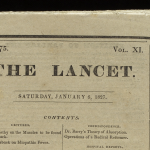Featuring the financial lure towards predatory publishing, an editorial mass migration and the rise of open data sets.
The price of academic integrity via Nature
With so many predatory journals exploiting the need of scientists to publish as much as they can, navigating the waters of academic publishing can be tricky. However, in countries such as South Africa, where authors are paid per published paper, many researchers are pushed into predatory publishing to increase payouts. Following the launch of a subsidy scheme in 2005, institutions are now paid up to US $7000 per paper published in an accredited journal, with up to half of this paid directly to the authors. Despite increased efforts to screen journals, many predatory publishers still make it onto the accredited list. In the decade following the launch of this incentive, the number of South African publications listed in the Scopus database more than doubled. In the same period, the number of papers from South Africa published in predatory journals increased 140-fold. The number of South African publications in predatory journals is now five times that of Brazil and the USA, and over double that of China, a country where scientists are often criticized for submitting manuscripts to such journals. These figures highlight the risks of using financial incentives to increase research output.
Migration season at Elsevier via Inside Higher Ed
This week saw Twitter feeds erupt following the mass resignation at the Journal of Informetrics. The entire editorial board announced their departure from the Elsevier-owned journal to start a rival, fully open access journal called Quantitative Science Studies, owned by the International Society for Scientometrics and Informetrics and published in collaboration with MIT press. The radical decision came around following concerns about Elsevier’s open access polices, commercial control and restrictions on data citation lists. Although this is not the first case of a mass exodus from Elsevier, this week’s announcement comes at a challenging time for the publisher after losing subscription from both the Max Plank Society and the Hungarian Consortium earlier this month.
The open data divide via The Scientist
When it comes to open data, the scientific community remains divided. On one side, those using data published by others to make novel scientific discoveries are referenced to as ‘parasites’, while on the other side, they are classed as ‘good scientists’. Arguments can be presented in favour of both sides of the open data debate, with the benefits of such repositories often being overshadowed by financial implications and time limitations for the scientist depositing the data set and by the fear of being scooped. Regardless of these concerns, there is no stopping the current trend towards open data. While both funders and journals are expected to play a key role in implementing this transition, the main driving force must come from the scientific community itself. As the availability of big data sets increases, researchers must realign their expectations to avoid being left behind.
Fresh recommendations for Plan S via MIT Libraries
Harvard Library and MIT Libraries have issued a joint statement endorsing Plan S and the strides it is making for open science, along with a set of recommendations for implementation of the plan. These outline the need for further clarification regarding the financial support provided for publishing in gold open access journals. Harvard Library and MIT Libraries also suggest that the plan broadens its stance on green open access journals as a workable and inexpensive means of achieving open access without restricting academic freedom, thus enabling authors to submit manuscripts to their journal of choice. The recommendations also call for a better description of terms used throughout the implementation plan to form a more complete picture of what compliance will entail in terms of embargoes, preprints and data deposits.






